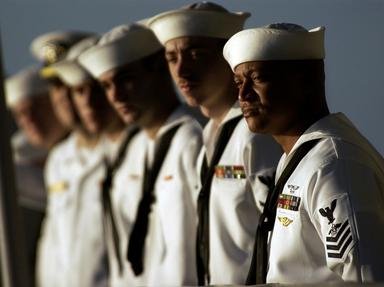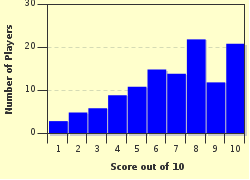Quiz Answer Key and Fun Facts
1. How many Nimitz-class supercarriers were commissioned by the United States Navy?
2. The supercarrier's defense is restricted to aircraft aboard the ship designed to hunt submarines and the support of the escort ships assigned to the supercarrier battle group.
3. On the flight deck of a supercarrier, what is the primary function of crew members attired in red, and known as the "red shirts"?
4. Among the jobs on the flight deck of a supercarrier, the Catapult Officers (also known as Shooters) and the Landing Signal Officer (LSO) are also required to be either experienced Naval Aviators or Naval Flight Officers.
5. On a supercarrier, or on any aircraft carrier, the designated authority to conduct flight operations is whom?
6. For a typical Nimitz-class supercarrier, how many service personnel members (officers, enlisted personnel, flight personnel, and Marines) are assigned to the ship when deployed?
7. As an added security measure, aircraft from a supercarriers do NOT carry marking that would identify from which supercarrier the aircraft were launched.
8. Which military aircraft was usually NOT considered as part of an air wing assigned to a supercarrier?
9. During the landing of a plane on the supercarrier, the aircraft pilot maintains maximum flight speed until they are able to identify the proper landing glide slope (usually at about 3/4 miles from the ship), and reduce power (speed) for the landing (trap).
10. As an additional safety measure and to insure alertness on the part of deck crews, flight operations aboard a supercarrier are usually restricted to "dawn to dusk" hours of operations.
Source: Author
maceomack
This quiz was reviewed by FunTrivia editor
ladymacb29 before going online.
Any errors found in FunTrivia content are routinely corrected through our feedback system.

